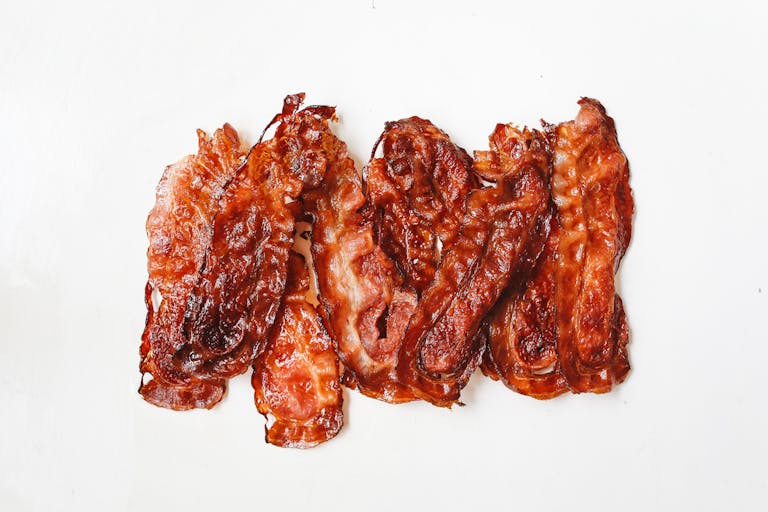Scientists Test New Drug Targeting Root Cause of Fatty Liver Disease

A new investigational medicine called ION224 is showing encouraging results against metabolic dysfunction-associated steatohepatitis (MASH), a severe form of fatty liver disease linked to obesity and type 2 diabetes. Researchers at the University of California San Diego School of Medicine, in collaboration with Ionis Pharmaceuticals, have conducted a major Phase IIb clinical trial that suggests this drug can directly reduce fat buildup and inflammation in the liver — two of the key drivers of MASH progression.
This development, published in The Lancet in August 2025, has attracted attention because MASH currently has no approved targeted therapies, and it is one of the leading causes of chronic liver disease worldwide. Let’s go through the details step by step, covering how the drug works, what the clinical trial found, and why this could mark a turning point in treating fatty liver disease.
Understanding MASH and Why It Matters
MASH, previously known as nonalcoholic steatohepatitis (NASH), is a serious condition where fat accumulates in the liver and causes ongoing inflammation and cellular damage. Over time, this can lead to fibrosis (scar tissue in the liver), cirrhosis, liver failure, or even liver cancer.
What makes MASH particularly troubling is that it is often called a silent disease. People may have it for years without experiencing noticeable symptoms, until the condition has advanced to a dangerous stage.
Some quick numbers to put it in perspective:
- More than 100 million people in the U.S. are estimated to have some form of fatty liver disease.
- Globally, as many as 1 in 4 adults may be affected.
- MASH is strongly linked with obesity, type 2 diabetes, and metabolic syndrome, making it a growing health challenge as these conditions become more common.
Until now, treatment options have mostly focused on weight loss, lifestyle changes, and managing related conditions. However, not all patients can achieve significant weight reduction, and many continue to progress despite interventions. This is why the search for direct pharmacological therapies has been a major area of research.
What is ION224 and How Does It Work?
ION224 is a ligand-conjugated antisense oligonucleotide (LICA-ASO). That’s a technical way of saying it is a specially designed molecule that can bind to the messenger RNA (mRNA) of a target gene and block its production.
The target in this case is an enzyme called DGAT2 (diacylglycerol O-acyltransferase 2). This enzyme plays a critical role in triglyceride synthesis in the liver. By shutting down DGAT2, ION224 essentially reduces the liver’s ability to produce and store fat.
This mechanism is different from most weight-loss drugs or metabolic therapies. Instead of addressing insulin resistance or appetite regulation, it goes directly to the source of fat buildup inside liver cells. By doing so, it not only reduces fat accumulation but also lowers inflammation and liver injury, which are the key drivers of fibrosis progression.
The Phase IIb Clinical Trial: ION224-CS2
The study, formally called ION224-CS2, was a randomized, double-blind, placebo-controlled Phase IIb trial. It took place across 43 clinical sites in the United States and Puerto Rico.
Who Participated?
- 160 adults, aged 18 to 75, took part in the trial.
- All had biopsy-confirmed MASH with fibrosis stages F1 to F3 (meaning early to moderate fibrosis, but not cirrhosis).
- Participants had to have at least 10% liver fat content at baseline.
How Was It Structured?
The trial had two parts:
- Part 1: Patients were randomized to monthly injections of 60 mg, 90 mg, or 120 mg of ION224, or a placebo.
- Part 2: After an interim analysis, more patients were enrolled and randomized to the 90 mg and 120 mg doses versus placebo.
Treatment lasted about 49 to 51 weeks (almost a full year). To be included in the main analysis, patients had to complete the final biopsy and receive at least 10 of the 13 planned doses.
The Main Goal (Primary Endpoint)
The researchers measured whether patients achieved:
- At least a 2-point reduction in the NAFLD Activity Score (NAS),
- With at least 1-point improvement in either inflammation or ballooning injury,
- And no worsening of fibrosis.
This is a standard way of defining meaningful improvement in MASH clinical trials.
Key Results of the Trial
Now to the most important part: what actually happened when patients received ION224 compared to placebo?
- At the 90 mg dose, 46% of patients met the primary endpoint, compared to 19% on placebo.
- At the 120 mg dose, 59% of patients met the endpoint, again compared to 19% on placebo.
That’s a clear difference, and the results were statistically significant.
Secondary Findings
Beyond the main endpoint, the trial also looked at other markers of liver health:
- MASH resolution without worsening of fibrosis was significantly more common in the ION224 groups.
- In the 120 mg group, 44% of patients achieved a 50% or greater reduction in liver fat measured by MRI scans, compared to just 3% on placebo.
- Fibrosis improvement: 32% of patients in the 120 mg group had at least a 1-stage improvement in fibrosis without worsening of steatohepatitis, compared to 12.5% on placebo.
Safety and Side Effects
- No deaths or drug-related serious adverse events occurred.
- Common side effects were reported but were generally mild and similar between the drug and placebo groups.
- Interestingly, fewer patients stopped treatment early in the ION224 groups compared to placebo, which suggests the treatment was tolerable over the full year.
Why These Results Matter
This trial is being described as a milestone in the treatment of fatty liver disease because it is the first drug of its kind to show such clear biological effects in humans.
A few key takeaways:
- The benefits of ION224 were seen regardless of weight loss. That means patients don’t have to rely solely on lifestyle changes for the drug to be effective, though it could be used in combination with other treatments.
- The improvements were seen across both liver fat content and inflammation, as well as signs of fibrosis, which is the stage most closely tied to poor outcomes.
- The trial confirms that targeting DGAT2 directly can interrupt the disease process at its root, which could potentially prevent progression to cirrhosis and liver failure.
What Happens Next?
The researchers and Ionis Pharmaceuticals plan to move ahead with larger Phase III trials to confirm these findings. If the next trials are successful, ION224 could become one of the first targeted therapies for MASH.
Given that MASH is projected to become a leading cause of liver transplants in the coming years, having a safe and effective therapy could significantly reduce the burden on healthcare systems and improve outcomes for millions of patients.
More About Fatty Liver Disease
Since this news centers on fatty liver disease, it’s worth exploring a bit more about the condition itself.
Types of Fatty Liver Disease
There are two major categories:
- Alcohol-related fatty liver disease (AFLD): Caused by heavy alcohol consumption.
- Metabolic dysfunction-associated steatotic liver disease (MASLD): A newer umbrella term that includes MASH and reflects non-alcohol-related causes tied to metabolic health.
Risk Factors
- Obesity
- Type 2 diabetes
- High cholesterol and triglycerides
- Sedentary lifestyle
- Poor diet, especially high in processed sugars and fats
Diagnosis
- Blood tests can suggest liver problems, but they aren’t specific.
- Imaging tests like ultrasound or MRI-PDFF can measure fat in the liver.
- The most definitive test is a liver biopsy, which remains the gold standard for staging MASH.
Current Treatments
Until drugs like ION224 are approved, the best strategies remain:
- Weight loss: Even a 7–10% weight reduction can significantly improve liver health.
- Diet changes: The Mediterranean diet, lower sugar intake, and reduced saturated fat intake are recommended.
- Exercise: Both aerobic and resistance training can reduce liver fat.
- Managing comorbidities: Controlling diabetes, cholesterol, and blood pressure reduces overall risk.
Conclusion
The Phase IIb trial of ION224 represents an exciting breakthrough in the search for effective treatments for MASH. By directly blocking DGAT2 and reducing triglyceride synthesis, this antisense oligonucleotide has shown clear benefits in reducing fat, inflammation, and fibrosis in the liver.
With larger trials ahead, it remains to be seen whether ION224 can become the first widely approved therapy for this widespread condition. But for now, the results provide much-needed hope for millions of patients who face the silent but serious risks of fatty liver disease.





